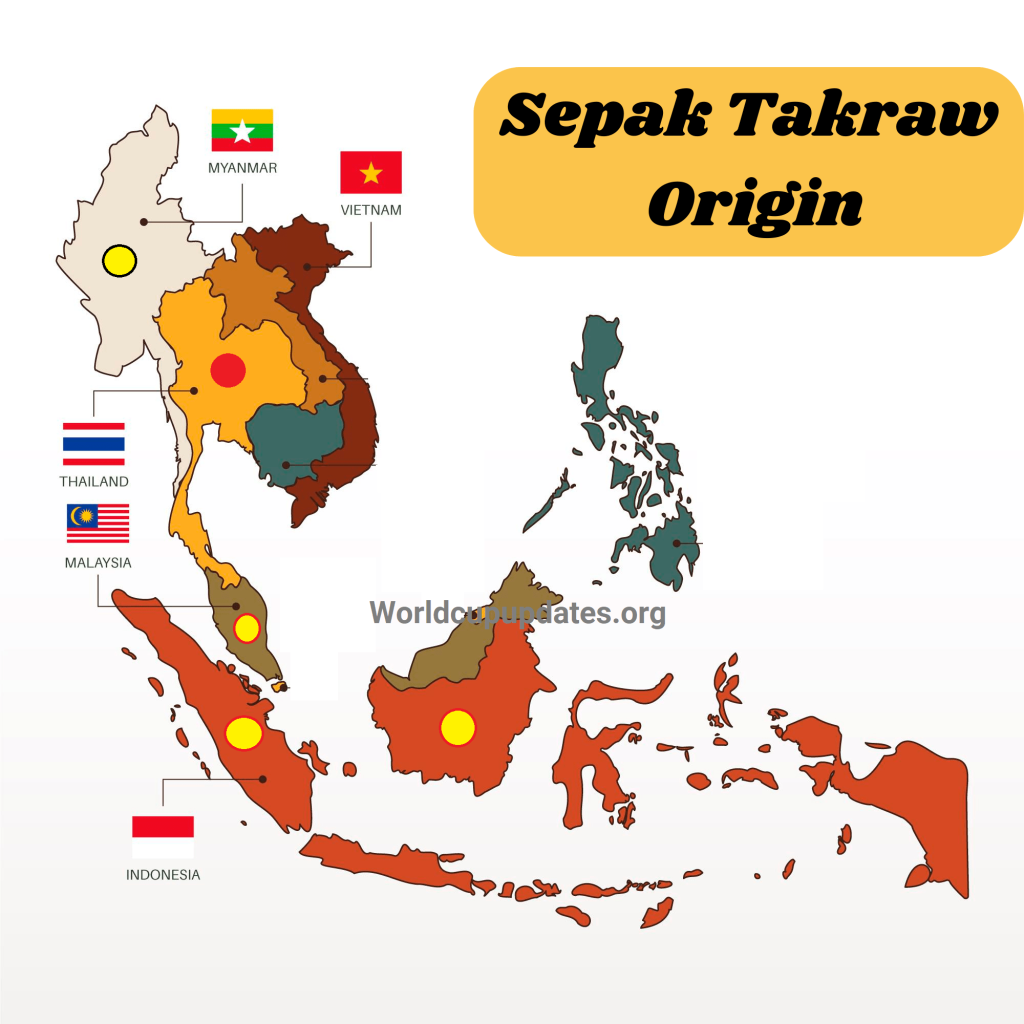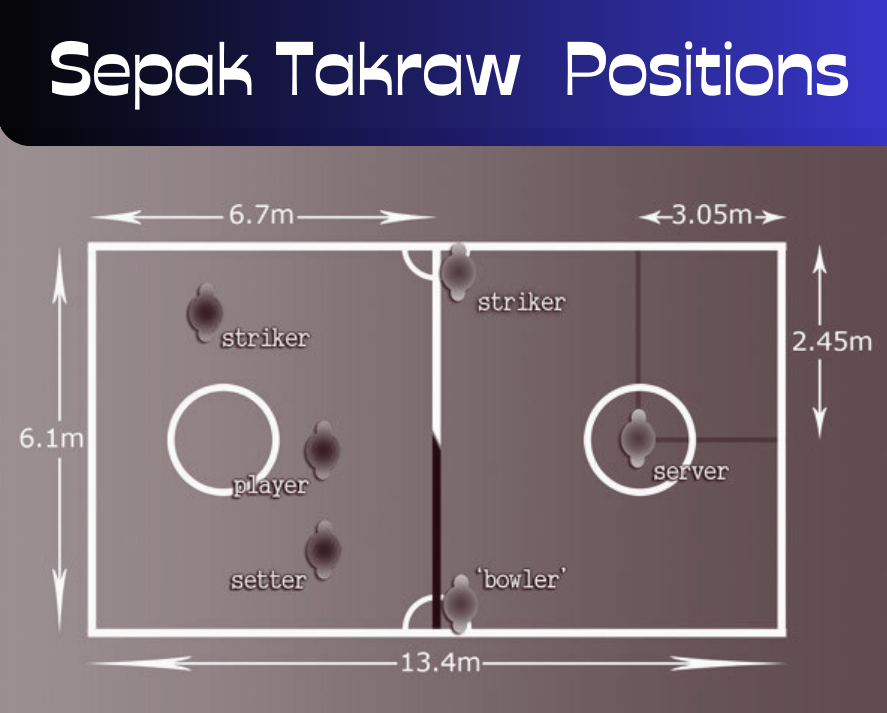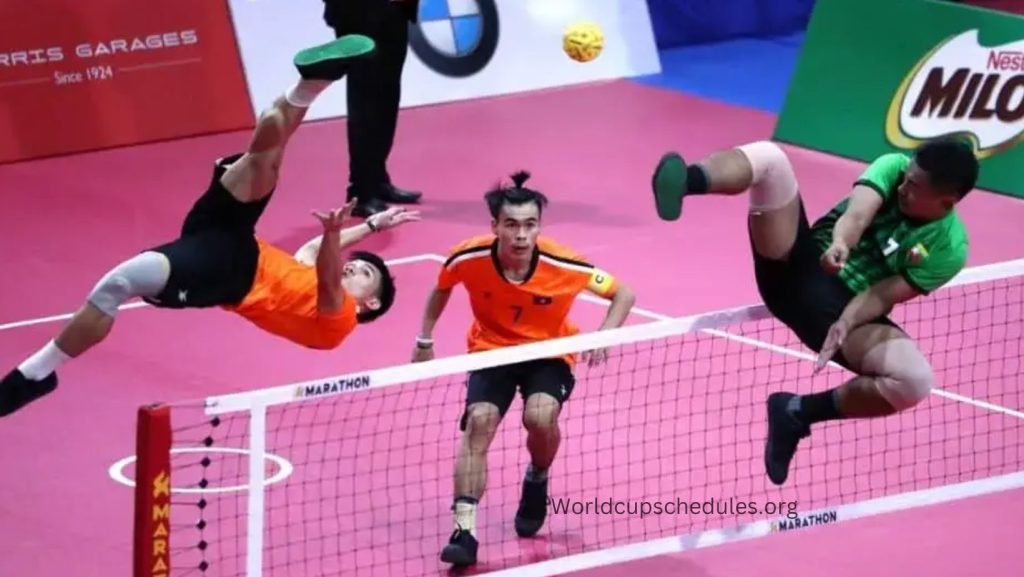Sepak takraw, also known as kick volleyball, is an exhilarating sport that showcases the perfect blend of skill, athleticism, and coordination.
Originating from Southeast Asia, sepak takraw has gained popularity worldwide for its fast-paced action and jaw-dropping acrobatics.
In this article, we will dive deep into the world of sepak takraw, exploring its history, rules, techniques, and the incredible athletes who make this sport truly remarkable.

The Origins of Sepak Takraw
The roots of sepak takraw can be traced back to the Malay Peninsula, with its earliest recorded history dating back over five centuries.
The game’s name itself reflects its origins, as “sepak” means “kick” in Malay, and “takraw” refers to a woven ball used in the game.
Over time, sepak takraw spread across Southeast Asia, captivating people with its unique blend of martial arts, volleyball, and soccer.
Rules and Regulations
To understand the sport better, let’s explore the fundamental rules and regulations of Sepak Takraw. The game is played on a rectangular court, divided by a net.
The objective is to hit a rattan ball, known as a “sepak takraw” or “takraw ball,” over the net and into the opponent’s court without it touching the ground.
Players are not allowed to use their hands during the game; they can only use their feet, knees, chest, and head to strike the ball. The team that scores the most points within a set timeframe or reaches a specific point limit first wins the game.
Read More: CONMEBOL released Copa América 2024 dates
Sepak Takraw Gameplay and Positions
Sepak Takraw is played between two teams, each consisting of three players on the court at a time. The players’ positions are divided into three categories: front, back, and pivot.

The front position is responsible for offense and striking the ball, while the back position focuses on defense and receiving the ball. The pivot position plays a crucial role in transitioning between offense and defense.
The gameplay involves a series of precise and acrobatic kicks, with players displaying incredible agility, flexibility, and coordination. The fast-paced nature of the sport keeps both players and spectators on the edge of their seats.
Essential Equipment
To play Sepak Takraw, you need minimal equipment. Here are the essential items:
Sepak Takraw Ball: The ball used in the sport is made of rattan or synthetic fibers, designed to be lightweight and durable.
Court and Net: The playing court is rectangular and divided by a net, similar to a volleyball court. The dimensions may vary depending on the level of play.
Training and Techniques of Sepak Takraw
To excel in Sepak Takraw, players must undergo rigorous training and develop various techniques. Here are some key training aspects and techniques used in the sport:
Physical Conditioning: Sepak Takraw demands high levels of fitness, including agility, flexibility, strength, and stamina. Players engage in cardiovascular exercises, strength training, and agility drills to enhance their overall performance.
Kicking Techniques: The sport requires players to master different kicking techniques, such as the inside kick, outside kick, knee kick, and header. These techniques determine the direction, power, and accuracy of the ball.
Teamwork and Communication: Effective communication and coordination among teammates are essential for success in Sepak Takraw. Players practice various drills and strategies to improve their teamwork and synchronization.

Strategy and Tactics
Sepak Takraw is not merely about physical prowess; it also involves strategic thinking and tactical play. Teams employ various strategies to outmaneuver their opponents and secure victory. Some common tactics include:
Offensive Plays: Teams devise attacking strategies to create openings in the opponent’s defense, aiming to score points by executing precise kicks and well-timed spikes.
Defensive Plays: Strong defensive tactics involve players positioning themselves strategically to block the opponent’s shots and prevent them from scoring.
Health Benefits of Sepak Takraw
Engaging in Sepak Takraw offers numerous health benefits, both physical and mental. Some notable advantages include:
Cardiovascular Fitness: The sport improves cardiovascular endurance, boosting heart health and overall fitness levels.
Flexibility and Agility: The dynamic movements and kicks in Sepak Takraw enhance flexibility, agility, and body coordination.
Strength and Stamina: Regular participation in the sport develops muscular strength and endurance, contributing to a well-toned physique.
FAQs about Sepak Takraw
How is sepak takraw different from traditional volleyball?
Sepak takraw differs from traditional volleyball in terms of the body parts used to strike the ball. While volleyball allows players to use their hands and arms, sepak takraw restricts players to using only their feet, knees, chest, and head.
Are there different variations of sepak takraw?
Yes, there are different variations of sepak takraw played across the world. The most common variations include “Regu,” which involves three players on each team, and “Doubles,” which features two players on each team.
Who is the captain of Indian Sepak Takraw team?
The Indian team was led by the Captain, Viseyie Koso from Nagaland following the team-mates like Ashish, Arun, Pawan Kumar from Delhi and Shiva from AP. The Indian Sepaktakraw Men team won Gold medal in Sepaktakraw Regu Division 1 in the 35th Kings World Cup held in Bangkok, Thailand.
Which country is the best at Sepak Takraw?
The Thailand men’s national sepak takraw team has established itself as the most dominant team in the world. They have achieved remarkable success by winning all two editions of the World Cup held so far.
Does Olympics have Sepak Takraw?
Yes, It was recognised as the international governing body for the sport by the Olympic Movement in year 1990. In 1990, Sepak Takraw was included as a medal sport at the Asian Games in Beijing.
What is the history of Sepak Takraw in India?
Sepak takraw is not widely recognized in India. However, it had the opportunity to showcase itself as a demonstration sport during the Delhi Asian Games in 1982. The establishment of the Sepak Takraw Federation in Nagpur, Maharashtra on September 10, 1982.



